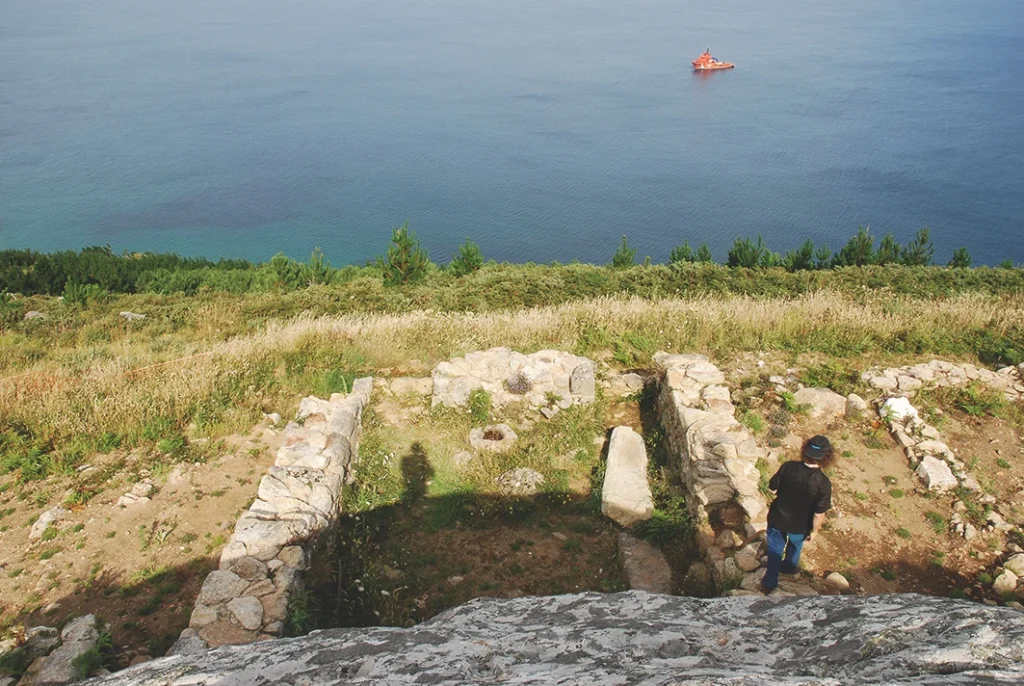Take the right-hand trail before the lighthouse to walk up to the top of this mountain (241m). The name comes from the bonfires or beacons that were used on coastal hilltops to warn the local population of invasion from the sea. When visiting Fisterra in the second half of the 18th c., the Italian cleric and traveller Domenico Laffi mentioned a tower on this mountain where a fire was lit to guide ships, but he also commented on the damage caused by vessels that raided the port.
As you go up the hill you’ll see a viewing point, built after the rubbish tip that was below was sealed off. After a steep trek uphill, you reach the top; nearby there’s an enclosure protecting the antennae of the radiotelegraphy station. According to Benjamín Trillo, the enclosure contains the tomb of Orcavella, whose name means “old tomb” or “dolmen”, as mentioned in the section on legends.

As you go up the hill you’ll see a viewing point, built after the rubbish tip that was below was sealed off. After a steep trek uphill, you reach the top; nearby there’s an enclosure protecting the antennae of the radiotelegraphy station. According to Benjamín Trillo, the enclosure contains the tomb of Orcavella, whose name means “old tomb” or “dolmen”, as mentioned in the section on legends.
After the enclosure, you come to a slight elevation that drops down to the sea on the western side, and there you’ll see the Pedras Santas, or sacred stones, which were already mentioned in the 16th c. by several travellers who went to Fisterra.
When you go down Monte Facho you’ll see an earthen track to the left that goes round the eastern slope and takes you to the remains of the chapel of San Guillerme. To get there, you need to take a diversion along a track to the right that goes to the chapel. From this high point you can enjoy some amazing views of the town, the beach of A Langosteira and the entire bay of Fisterra. The remains of the walls of the chapel and a sepulchre can be seen next to a large rock, which may have something to do with the “stone bed” mentioned by Martin Sarmiento in 1745, where infertile couples were said to lie down and encounter the solution to their ills.
There is no information about the founding of the shrine; however, there are some records that indicate that it was an important place of pilgrimage, and it is mentioned by Flemish courts when they imposed the sentence of pilgrimage to a distant place. According to cardinal Del Hoyo, Breton pirates who attacked Fisterra stole the saint’s relics from the shrine along with one of the saint’s arms decorated with silver that was kept in the parish church.
San Guillerme (Saint William) became a legendary figure with different stories about who he was and what he did. The real San Guillerme was very probably a hermit who retired to live in this place.